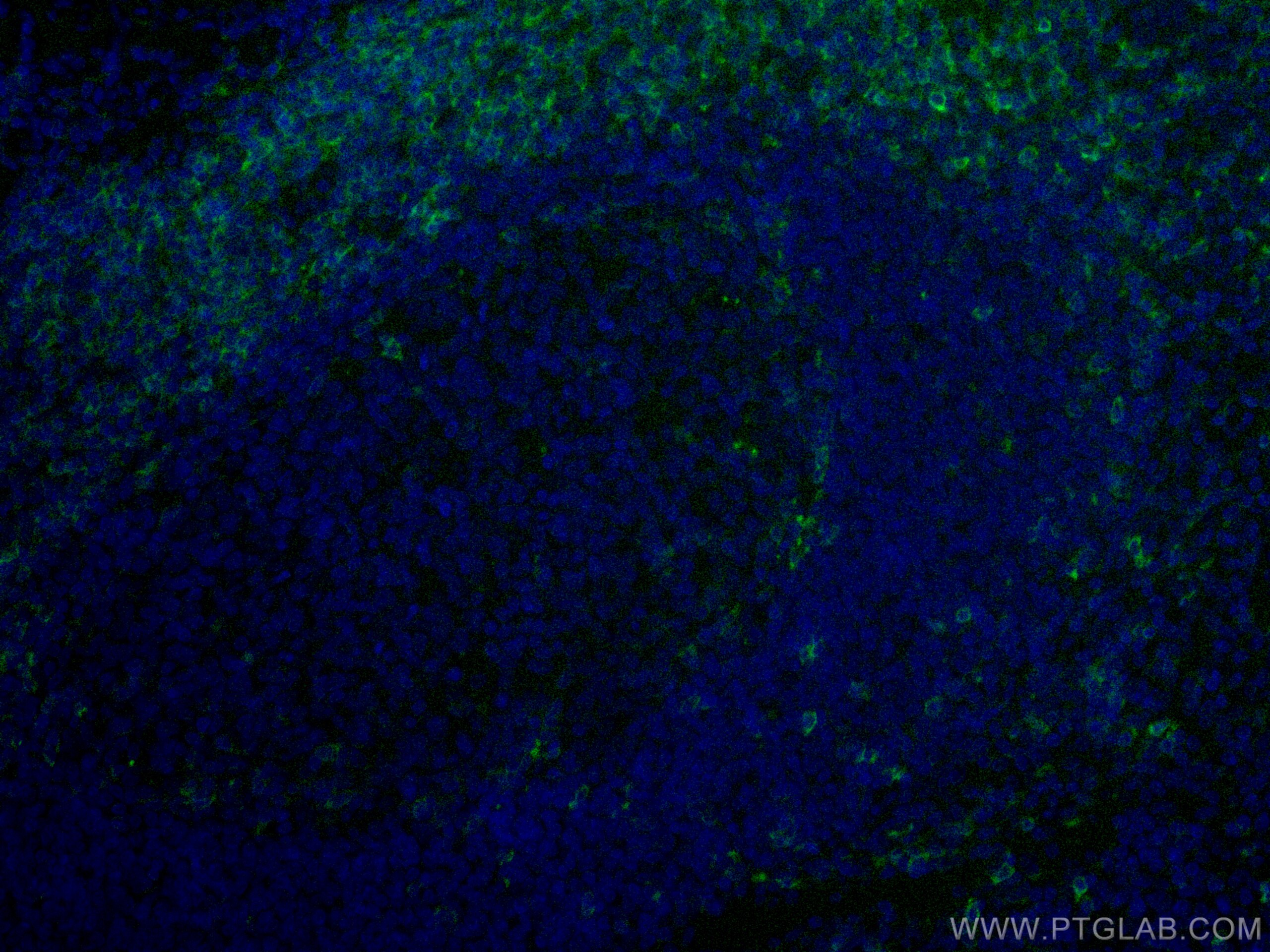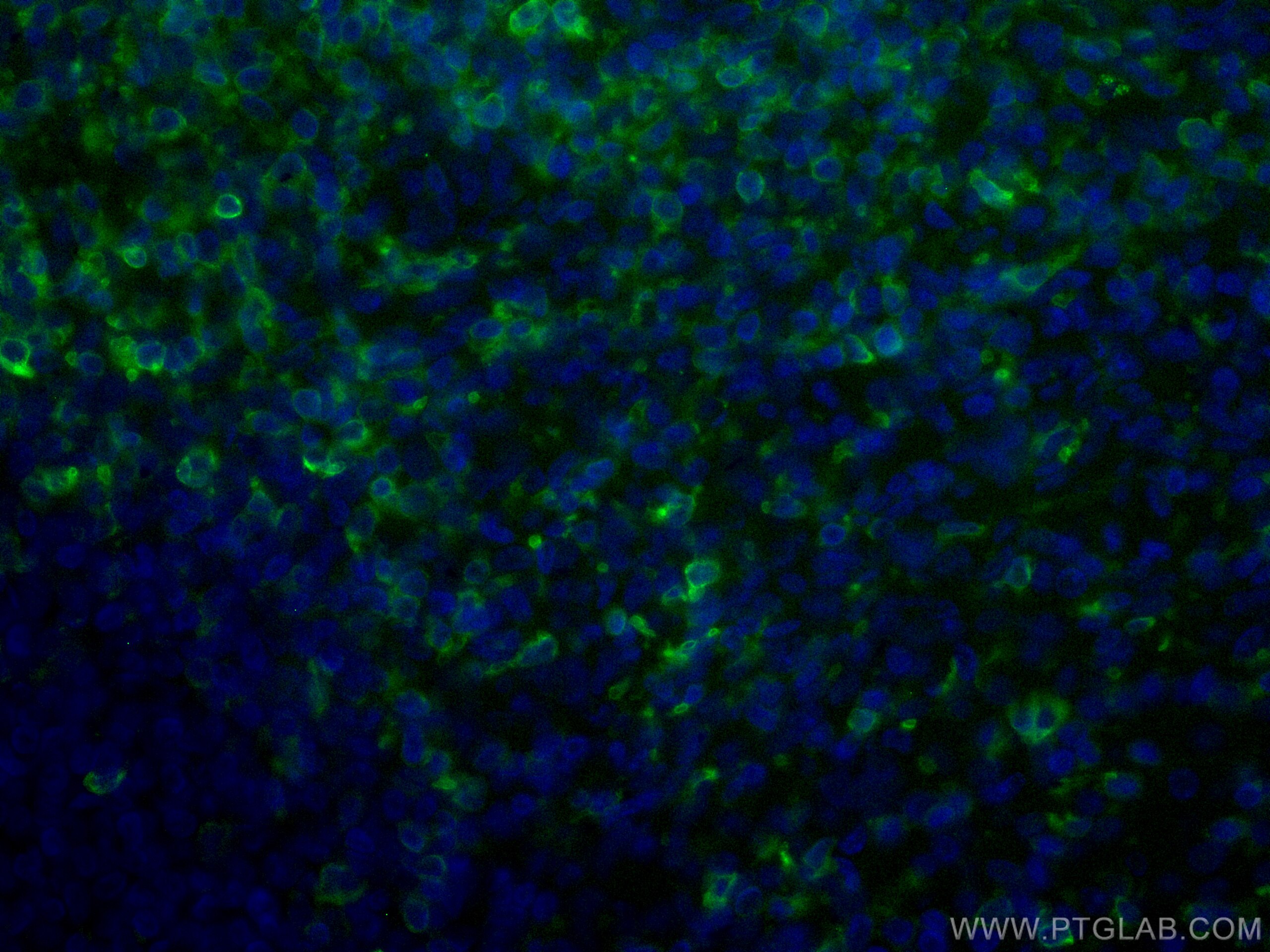Anticorps Monoclonal anti-CD5
CD5 Monoclonal Antibody for IF-P
Hôte / Isotype
Mouse / IgG2b
Réactivité testée
Humain
Applications
IF-P
Conjugaison
CoraLite® Plus 488 Fluorescent Dye
CloneNo.
4D12C10
N° de cat : CL488-67278
Synonymes
Galerie de données de validation
Applications testées
| Résultats positifs en IF-P | tissu d'amygdalite humain, |
Dilution recommandée
| Application | Dilution |
|---|---|
| Immunofluorescence (IF)-P | IF-P : 1:50-1:500 |
| It is recommended that this reagent should be titrated in each testing system to obtain optimal results. | |
| Sample-dependent, check data in validation data gallery | |
Informations sur le produit
CL488-67278 cible CD5 dans les applications de IF-P et montre une réactivité avec des échantillons Humain
| Réactivité | Humain |
| Hôte / Isotype | Mouse / IgG2b |
| Clonalité | Monoclonal |
| Type | Anticorps |
| Immunogène | CD5 Protéine recombinante Ag11065 |
| Nom complet | CD5 molecule |
| Masse moléculaire calculée | 495 aa, 55 kDa |
| Numéro d’acquisition GenBank | BC027901 |
| Symbole du gène | CD5 |
| Identification du gène (NCBI) | 921 |
| Conjugaison | CoraLite® Plus 488 Fluorescent Dye |
| Excitation/Emission maxima wavelengths | 493 nm / 522 nm |
| Forme | Liquide |
| Méthode de purification | Purification par protéine A |
| Tampon de stockage | PBS with 50% glycerol, 0.05% Proclin300, 0.5% BSA |
| Conditions de stockage | Stocker à -20 °C. Éviter toute exposition à la lumière. Stable pendant un an après l'expédition. L'aliquotage n'est pas nécessaire pour le stockage à -20oC Les 20ul contiennent 0,1% de BSA. |
Informations générales
CD5 is a type I transmembrane glycoprotein of the scavenger receptor cysteine-rich family (PMID: 12403363). CD5 is expressed on a majority of thymocytes, mature T cells, B cell subsets, and peripheral blood dendritic cells (PMID: 9858516; 6156984; 10379049; 1384337). CD5 may act as a receptor in regulating T-cell proliferation. It functions as a negative regulator of TCR signaling during thymocyte development (PMID: 7542801).
Protocole
| Product Specific Protocols | |
|---|---|
| IF protocol for CL Plus 488 CD5 antibody CL488-67278 | Download protocol |
| Standard Protocols | |
|---|---|
| Click here to view our Standard Protocols |



